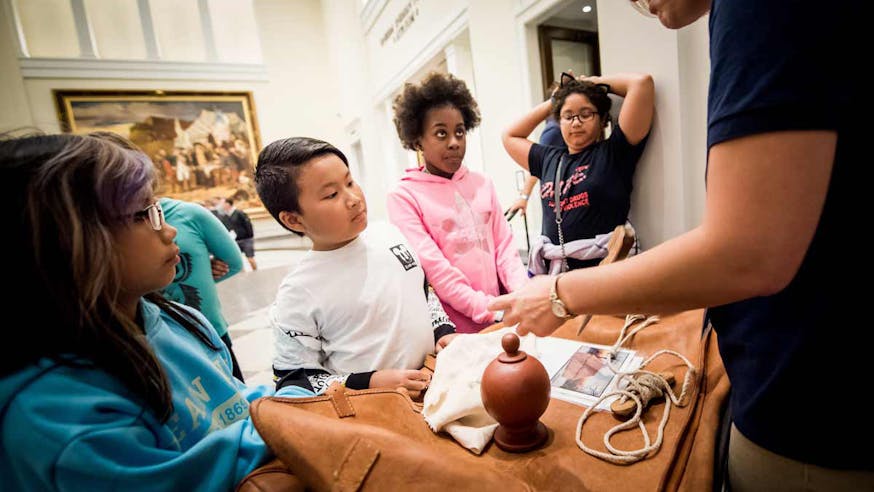Archaeology at the Museum Discovery Cart

Before we built the Museum of the American Revolution in Old City, Philadelphia, archaeologists, people who study the things left behind from the past to understand what life was like, uncovered thousands of artifacts on the site dating back to the 1740s. These artifacts came from the houses, workshops, and even privies (outhouse toilets) of everyday people. Mary and Benjamin Humphreys, for example, lived in a small house along Carter’s Alley, beneath where the Museum now stands. They bought their house just as the American Revolution was beginning, and the objects they lost and threw away give us clues about their everyday lives.
Below is a small sampling of what was found. If you're interested in a deeper dive — or more appropriately, dig — into these archaeological findings, we recommend checking out Dr. Rebecca Yamin's book, Archaeology at the Site of the Museum of the American Revolution.
Privy

A privy was an outhouse, which people used as a toilet and a trash pit in Revolutionary Philadelphia. You can see two in the photo above, lined with rings of brick, that belonged to the Humphreys family.
Stratigraphy

Stratigraphy is the layering of soil over time, which can help archaeologists with dating past events. The deeper you go, the older the layers are, like tree rings.
Milk Pan

The Humphreys used a ceramic pan to separate and gather cream from milk. The large “H” scratched on the bottom of this one helped us confirm we were digging in their privy.
Bottles and Cups
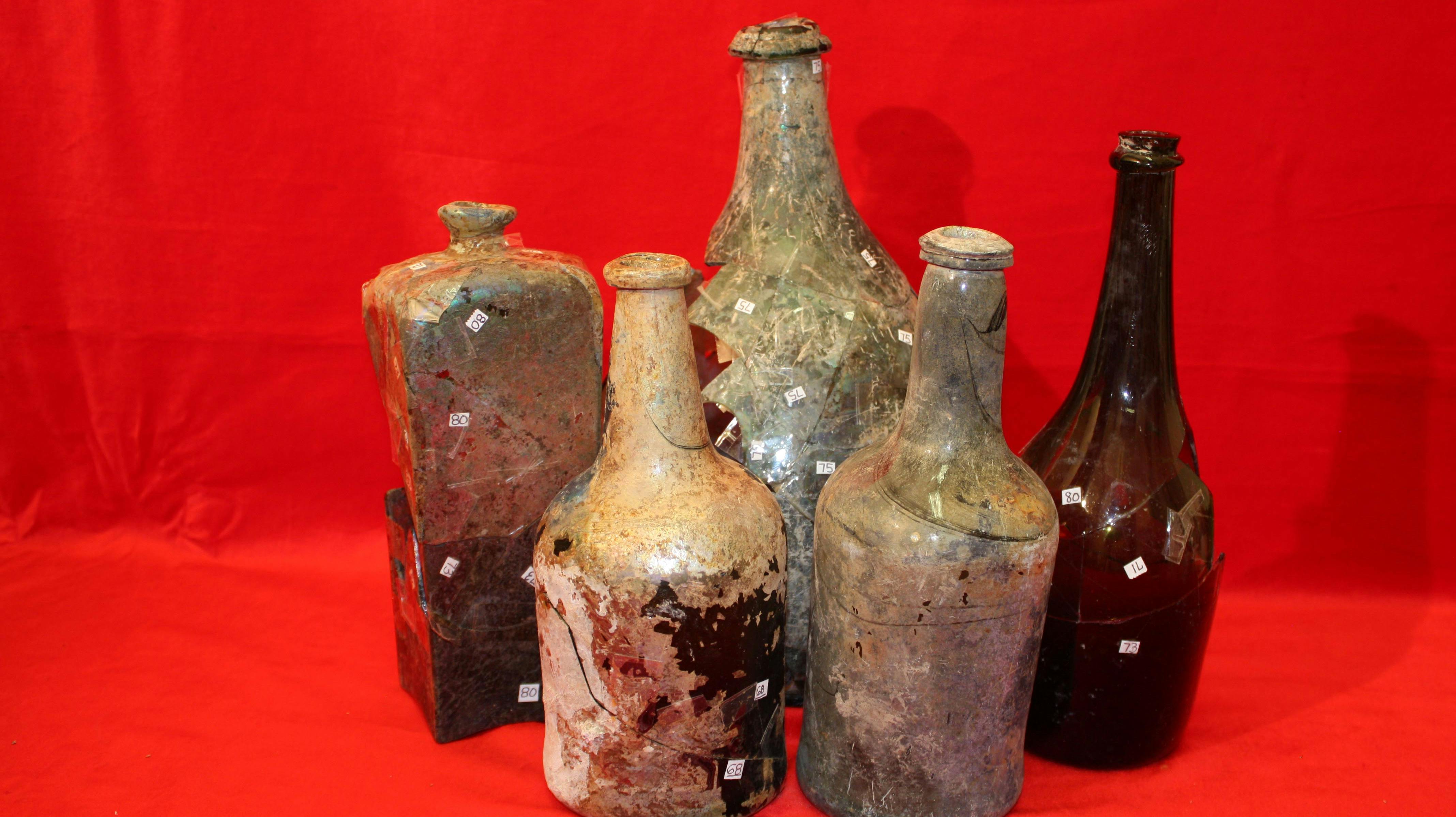

These drinking vessels are one indication – along with court records – that Mary Humphreys was operating an illegal tavern in her front parlor.
Window Glass
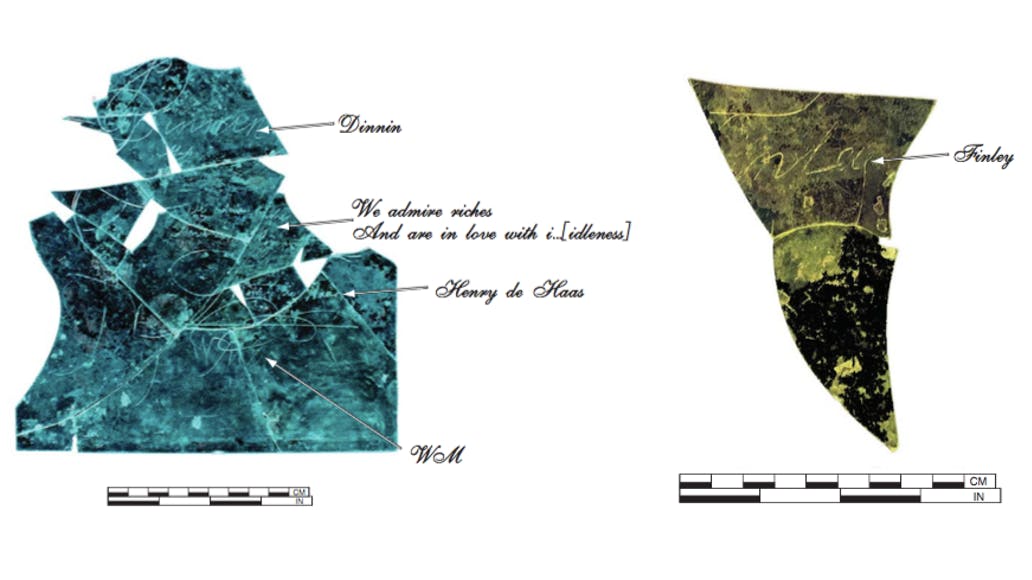
Guests in the Humphreys tavern scratched their names, initials, and even a line from a famous play into this windowpane.
Punch Bowls

The Humphreys family used at least two remarkable punchbowls. One commemorated a particular ship, the Triphena, a ship that carried a protest letter against the Stamp Act of 1765. The other turned out to be the “holy grail” of American ceramics, the first proof that early Philadelphians were making hard-paste porcelain.
Learn More
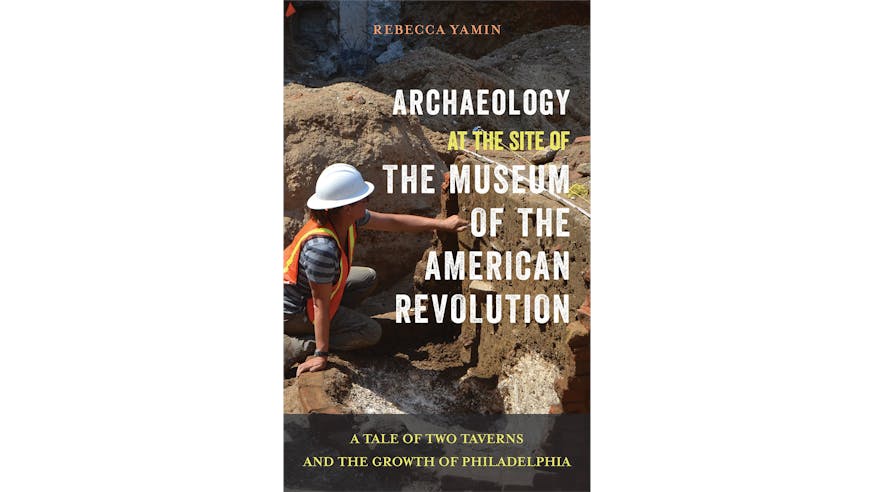
Archaeology at the Site of the Museum of the American Revolution
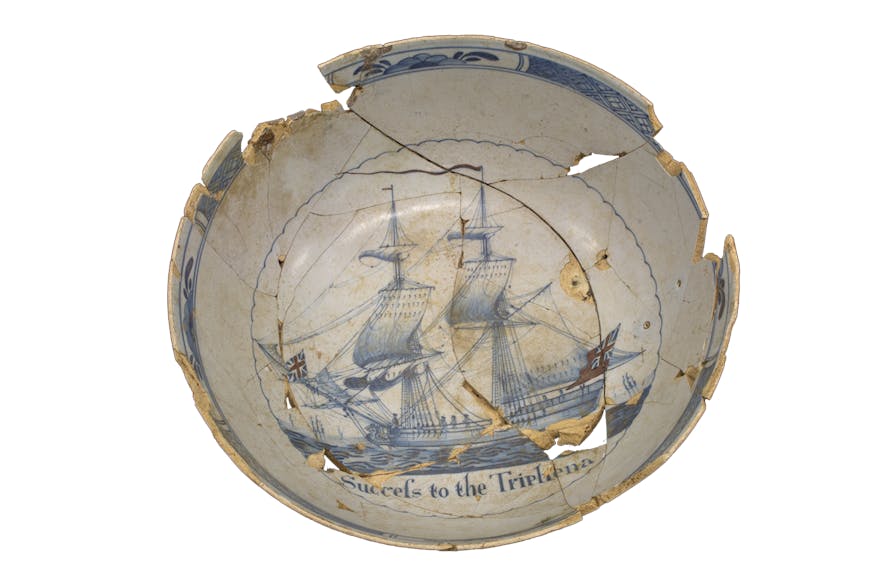
Triphena Punch Bowl
